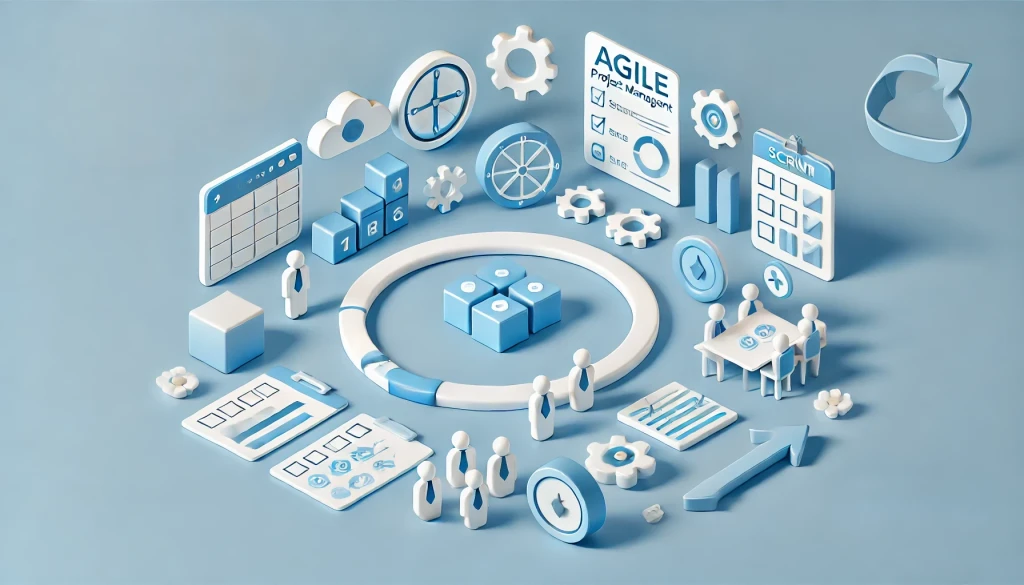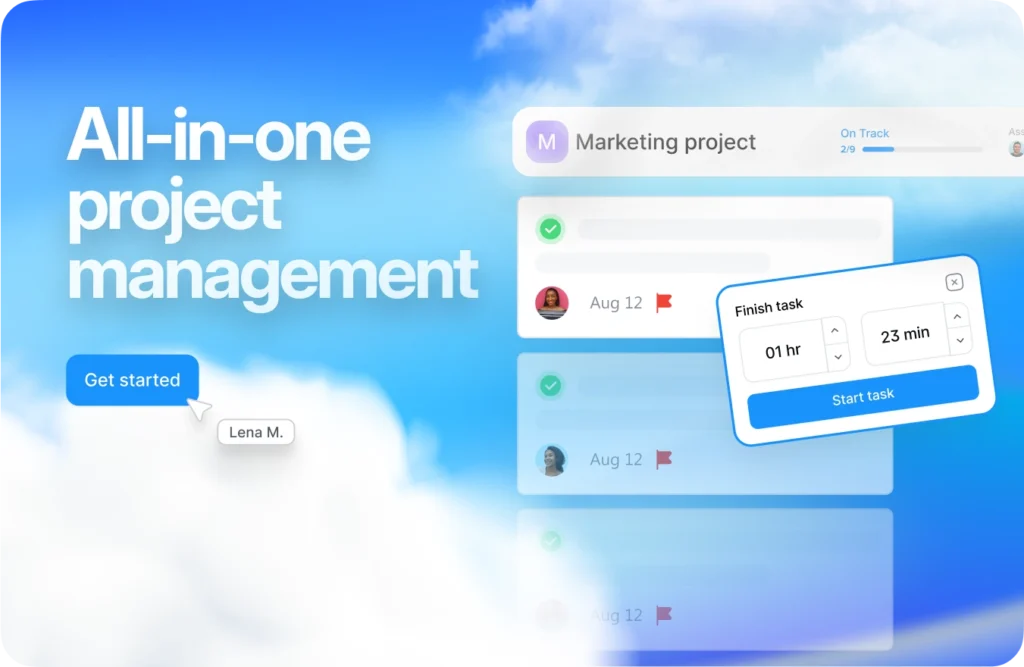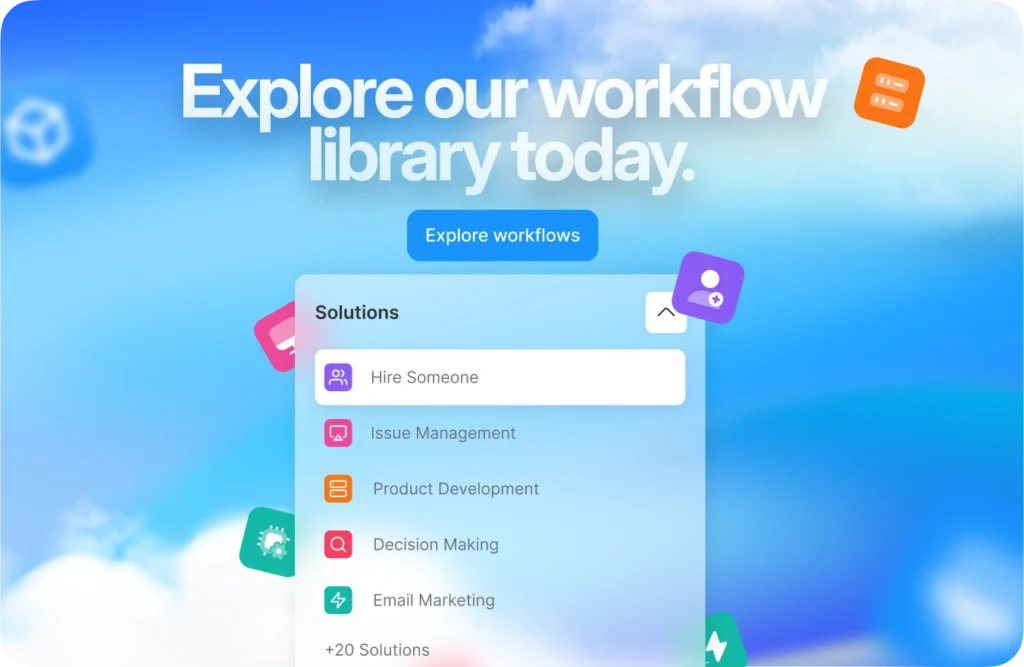Scrum in Agile Project Management: A Complete Beginner’s Guide

Agile project management has revolutionized the way teams handle projects, making them more adaptable, efficient, and collaborative. One of the most popular Agile frameworks is Scrum, which enables teams to work in short, iterative cycles to deliver high-value products efficiently. But why has Scrum become the go-to framework for Agile teams?
In today’s fast-paced business environment, traditional project management methods often struggle to keep up with changes. Scrum addresses this challenge by offering a flexible, lightweight approach that encourages frequent feedback, continuous improvement, and close collaboration among team members. Organizations across industries—ranging from software development to marketing and even construction—have adopted Scrum to enhance their project management capabilities.
This article explores the principles, roles, artifacts, and best practices of Scrum to help you understand how to implement it effectively for successful Agile project management.

What is Agile?
Agile is a project management methodology that focuses on iterative development, collaboration, and customer feedback. It emphasizes flexibility and adaptability, allowing teams to respond to changes quickly and effectively—especially when teams are distributed and require structured collaboration practices. Unlike traditional project management methods, Agile breaks down projects into small, manageable units called iterations or sprints. Each iteration involves planning, execution, and evaluation, enabling continuous improvement through feedback-driven performance management approaches. Agile’s core values include individuals and interactions, working software, customer collaboration, and responding to change.
When you should use Agile:
- Dynamic Requirements: When project requirements are expected to change frequently.
- Customer Involvement: When continuous customer feedback is essential.
- Complex Projects: When projects are complex and require incremental progress.
- Time-Sensitive Projects: When time-to-market is crucial, and there is a need to deliver functional products rapidly.
What is Scrum?
Scrum is a subset of Agile, specifically a framework used to implement Agile principles. It is designed to help teams work together more effectively, often used in software development but applicable to various industries. Scrum divides projects into fixed-length iterations called sprints, typically lasting two to four weeks. During each sprint, teams focus on delivering a potentially shippable product increment. The Scrum framework is structured to encourage accountability, transparency, and continuous improvement through regular inspection and adaptation.
The Scrum Framework:
- Roles: Key roles in Scrum include the Product Owner, Scrum Master, and Development Team.
- Artifacts: Important artifacts are the Product Backlog, Sprint Backlog, and Increment.
- Events: Scrum events include Sprint Planning, Daily Scrum, Sprint Review, and Sprint Retrospective.
Scrum Tools and Software:
- JIRA: A popular tool for managing Scrum projects, offering features like sprint planning and tracking.
- Trello: A user-friendly tool for visual project management.
- Asana: Helps teams organize work, from daily tasks to strategic initiatives.
- Slack: Facilitates communication and collaboration among team members.
When you should use Scrum:
- Team Collaboration: When high levels of team collaboration and communication are needed.
- Incremental Progress: When projects benefit from delivering work in small, manageable increments.
- Feedback-Driven Development: When ongoing feedback from stakeholders is necessary.
The Key Roles in Scrum
One of the defining characteristics of Scrum is its self-organizing teams, where members take ownership of their work. Scrum defines three key roles:
Scrum Master
The Scrum Master is a servant leader responsible for ensuring that the team follows Scrum principles. Their key responsibilities include:
- Removing obstacles that hinder team progress
- Coaching the team on Scrum best practices
- Facilitating Scrum events (sprint planning, stand-ups, retrospectives)
- Ensuring collaboration between stakeholders
Product Owner
The Product Owner represents the customer and is responsible for:
- Managing and prioritizing the product backlog
- Defining the product vision and communicating it to the team
- Maximizing the value of the product being developed
- Engaging with stakeholders for feedback
Development Team
The Development Team consists of professionals who work together to build the product. They:
- Self-organize and determine how to complete their work
- Collaborate to achieve sprint goals
- Deliver a “Done” increment at the end of each sprint

Scrum Events (Ceremonies)
Scrum follows a structured workflow through a series of events, often referred to as Scrum ceremonies, offering the kind of rhythm and clarity that helps teams resolve conflict more constructively These events ensure that work remains organized, transparent, and focused on delivering value.
Sprint Planning
Sprint Planning is a meeting that kicks off each sprint. The Product Owner, Scrum Master, and Development Team collaborate to define the sprint goal and select backlog items for the sprint.
Key Aspects of Sprint Planning:
- The Product Owner presents the prioritized product backlog.
- The Development Team selects the highest-priority tasks they can complete.
- The team estimates effort and breaks down backlog items into smaller tasks.
- A clear Sprint Goal is established.
Daily Scrum (Stand-up Meeting)
The Daily Scrum is a short, time-boxed meeting (usually 15 minutes) held every day of the sprint.
Key Purposes of the Daily Scrum:
• Each team member answers three key questions:
1. What did I accomplish yesterday?
2. What will I do today?
3. Are there any obstacles blocking my work?
• Helps maintain transparency and collaboration.
• Encourages quick decision-making and problem-solving.
Sprint Review
The Sprint Review is held at the end of each sprint to demonstrate the completed work.
Key Elements of Sprint Review:
- The Development Team presents the working product increment.
- Stakeholders provide feedback and suggestions.
- The Product Owner adjusts the backlog based on feedback.
Sprint Retrospective
The Sprint Retrospective is the final ceremony of the sprint, where the team reflects on their performance.
Key Goals of Sprint Retrospective:
- Identify what went well and what needs improvement.
- Address challenges faced during the sprint.
- Make process improvements for the next sprint.
The Scrum Workflow
Scrum follows an iterative cycle that repeats until the project is complete—providing structure in environments where flexible planning tools are essential.
Step-by-Step Scrum Workflow:
- Product Backlog Creation – The Product Owner maintains and prioritizes the backlog.
- Sprint Planning – The team selects work items and defines sprint goals.
- Sprint Execution – The Development Team works on the sprint backlog.
- Daily Scrum – Team members discuss progress and roadblocks.
- Sprint Review – The completed increment is demonstrated to stakeholders.
- Sprint Retrospective – The team reflects and improves their process.
This cycle repeats until the product is complete or no further iterations are needed.
Scrum vs. Traditional Project Management
| Feature | Scrum (Agile) | Waterfall (Traditional) |
| Project Planning | Iterative, flexible | Linear, fixed at the beginning |
| Scope Management | Can change based on feedback | Fixed, difficult to modify |
| Execution Style | Self-organizing teams | Managed by project managers |
| Customer Involvement | Continuous, throughout the project | Usually only at milestones |
| Delivery Timeline | Incremental deliveries in sprints | Delivered as a whole at the end |
| Risk Handling | Reduced risk through iterations | Higher risk due to late testing |
Scrum has transformed Agile project management by empowering teams, enhancing collaboration, and enabling adaptability. Organizations that embrace Scrum can deliver high-quality products faster while continuously improving their processes.
By following Scrum principles, leveraging the right tools, and fostering an Agile mindset, teams can achieve long-term success in project management.

